INDIA'S FARMERS' PROTEST SHOWS NO SIGNS OF WAVERING
In a movement that began in November of 2020, tens of thousands of farmers and laborers in India continue to sit in protest on highways surrounding New Delhi, fighting a new set of laws that put their livelihoods at risk.
Editor’s Note: This story is published in the Spring 2021 edition of Life & Thyme Post, The History Issue, our exclusive newspaper for Life & Thyme Members. Subscribe to Life & Thyme Post
After months of protesting the Indian government’s new agricultural laws, farmers and laborers who are gathered on a stretch of highway outside New Delhi have fallen into a familiar routine.
Tens of thousands of people camp out in their trucks, trolleys and tents for weeks at a time, but not those who live nearby. “Those who aren’t sleeping here—those who are locals from [neighboring] Haryana—they get in their trolleys and arrive in the morning and go back home in the evening,” explains Bhupender Chaudhary in Hindi.
Chaudhary is a member of one of the largest farmers’ unions in India—Bharatiya Kisan Union—and spoke to Life & Thyme from the Tikri border at a protest site that is sprawled across ten to twenty kilometers of highway outside New Delhi. “The national media is showing that people are leaving and the protest is breaking, but that’s not true,” he says. “People have responsibilities in their day-to-day lives, [but they] are joining us every day.”
Tens of thousands of farmers and laborers started gathering at the Tikri border and other locations surrounding Delhi on November 26, 2020, after three new bills were passed by parliament in September and then signed into law. These contentious laws were introduced by Prime Minister Narendra Modi’s government with the intent to modernize India’s agriculture industry by allowing farmers to sell their crops to anyone—including large companies—at free market prices.
In the past, the government guaranteed farmers at least a minimum price for certain crops. Now, with that protection removed thanks to the new laws, many farmers fear large corporations will be able to drive down prices, making it impossible for them to make ends meet and pushing an already impoverished population even closer to the brink of insolvency.
In response, on November 26, 250 million people across India participated in a twenty-four-hour strike, and between November 28 and December 3, up to 300,000 people marched on the nation’s capital in protest. The movement has been ongoing ever since and is now officially the largest organized strike in history.
“There have been eleven rounds of meetings between the government and our leaders. But our demand is to repeal these laws, and the government does not want to do that,” says Chaudhary. “They’re offering some amendments, but they’re not listening to our demands to end these laws. That’s the problem.”
Authorities have, at times, responded to protests with violence, notably on January 26 when police aimed tear gas and used batons against thousands of people who marched on New Delhi’s historic Red Fort. In various media reports, farmers’ union members have since stated that the movement was intended to be peaceful but turned chaotic after people who were not affiliated with the protests infiltrated the march and perpetrated violence against police officers.
Tear gas was also deployed against protestors at sites, like the Singhu border, near the nation’s capital on that date. Since then, union members say police have been launching arbitrary inquiries against farmers. “There was one man who wasn’t even at the protests on January 26—he was sitting at home—but police still included his name in an FIR,” says Chaudhary. An FIR, or a First Information Report, is a case file prepared by police in South Asian countries once they are informed of a potential criminal offense.
After the violence on January 26 led to the death of one protestor and hundreds of injured police and protestors alike, barricades and barbed wires currently prevent protestors at sites like the Tikri border from encroaching any closer to Delhi. But the main causes of death among protestors since the movement began in November have been medical ailments, accidents, and exposure to the elements. Some sources suggest the death toll among farmers between November 26 and February 20, 2021, is estimated at 248. Chaudhary believes it is even higher, standing closer to 275.
“There’s a shortage of basic necessities like water. The other day it rained and everything—tents, beds, the stage—got wet,” Chaudhary says. “We had different problems in the winter and we’ll have different problems in the summer and monsoon season—but I don’t think they’ll be able to uproot us.”
With the help of non-governmental organizations like Khalsa Aid, the group at the Tikri border is busy preparing for India’s deadly summer season—thirty-six people died due to heat waves in 2019—by fixing coolers and fans into trolleys that act as makeshift homes on the highway.
In documenting this historic movement, photographer Jaskaran Singh says he was struck by the friendly and safe environment he encountered at the Tikri border. After arriving at the highway alone at 11 p.m. on a cold December night, he was able to find a mattress and a spot to sleep in. The next thing he knew, Singh was woken up at 3 a.m. by someone handing him a lohi, a thick shawl to help him keep warm. “Then I woke up again at 7 a.m. and someone gave me his blanket. I found this experience really beautiful,” he says.
Singh has been documenting the experiences of protestors at the Tikri border ever since, only stopping every three weeks or so to visit home.
In the absence of Modi’s government meeting their demands, Chaudhary says the next step is to call for an all-India strike on March 26. “The whole country is protesting. This is not just about Haryana and Punjab,” he says, naming two of India’s most agriculture-heavy states, and the epicenter of the protest movement.
“There’s still hope,” he continues. “That’s why we’re still here despite witnessing death and facing so many struggles. There’s hope that one day we’ll win this fight.”

A laborer harvesting crops in a rice paddy in Jalandhar, Punjab, last fall.
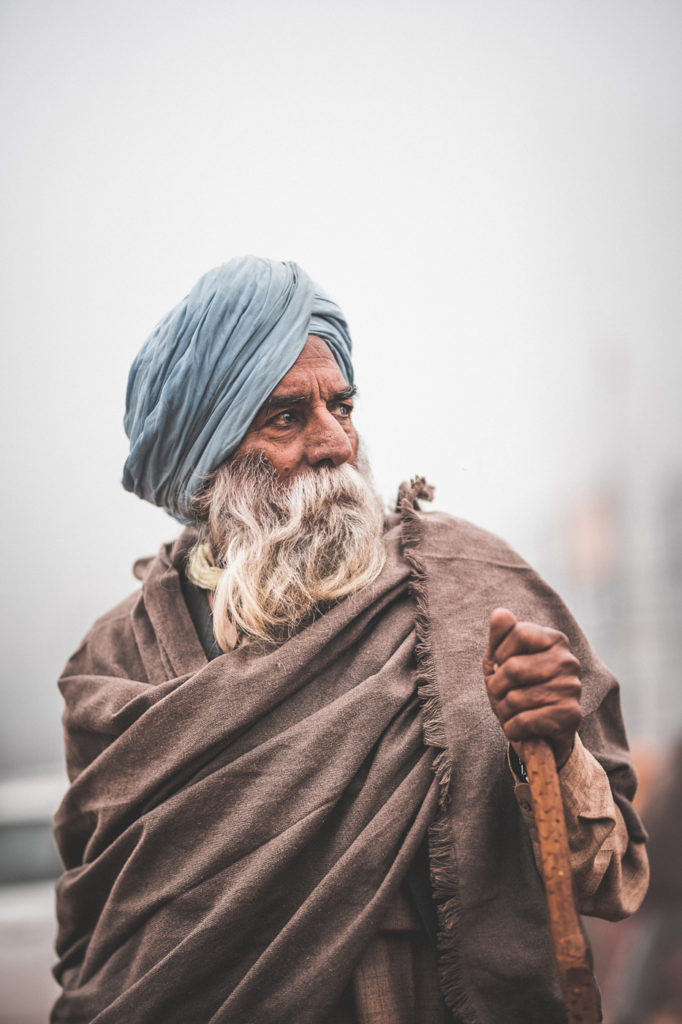
A farmer in his late eighties stands shivering on a cold North Indian winter morning. He is one of the protestors at the Singhu border north of Delhi.
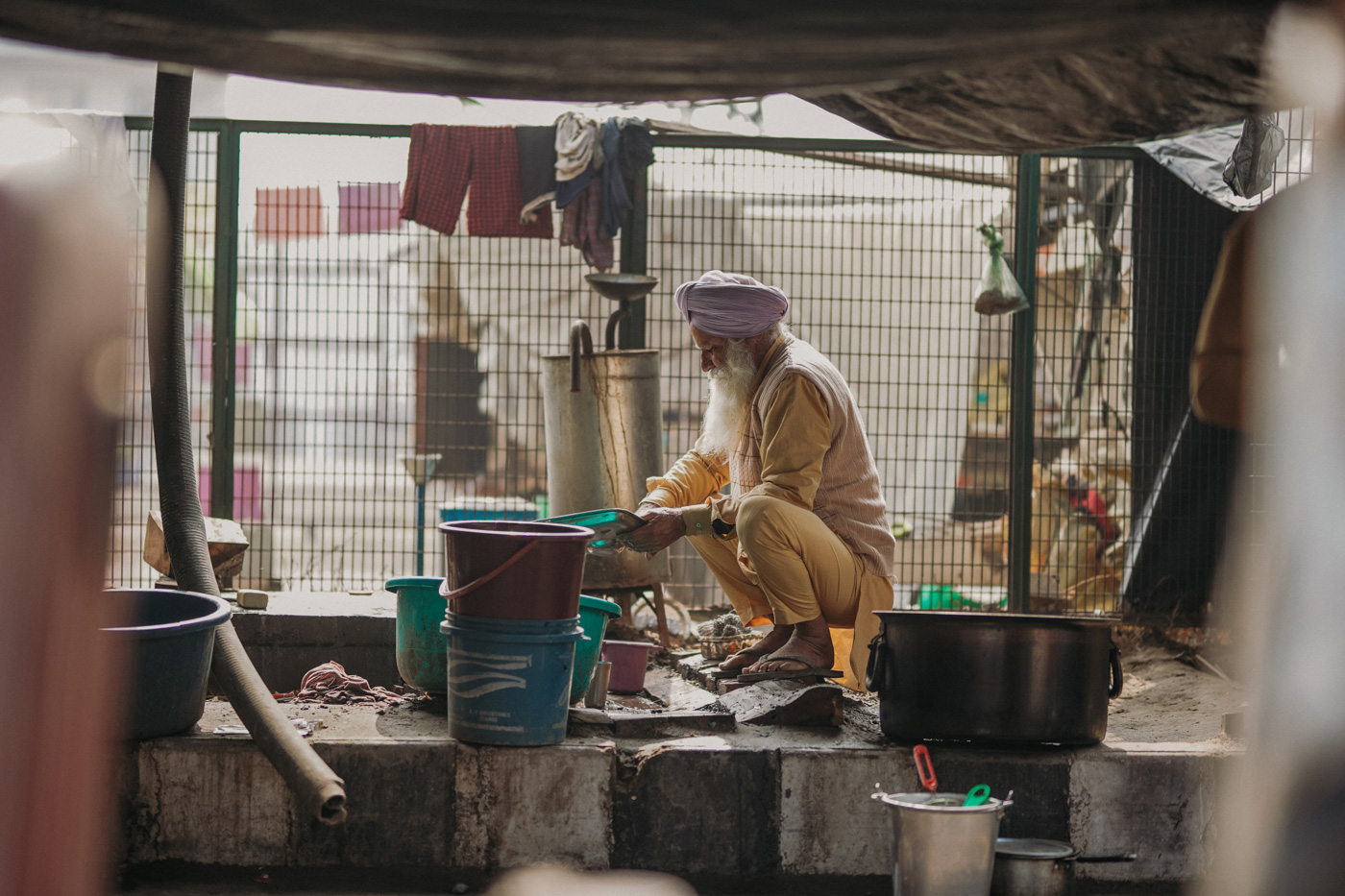
A man washes utensils at a makeshift wash basin under a metro station. The items were used to feed protestors at one of the many langars set up across the region. A langar is a Sikh community kitchen that serves free meals to all visitors.
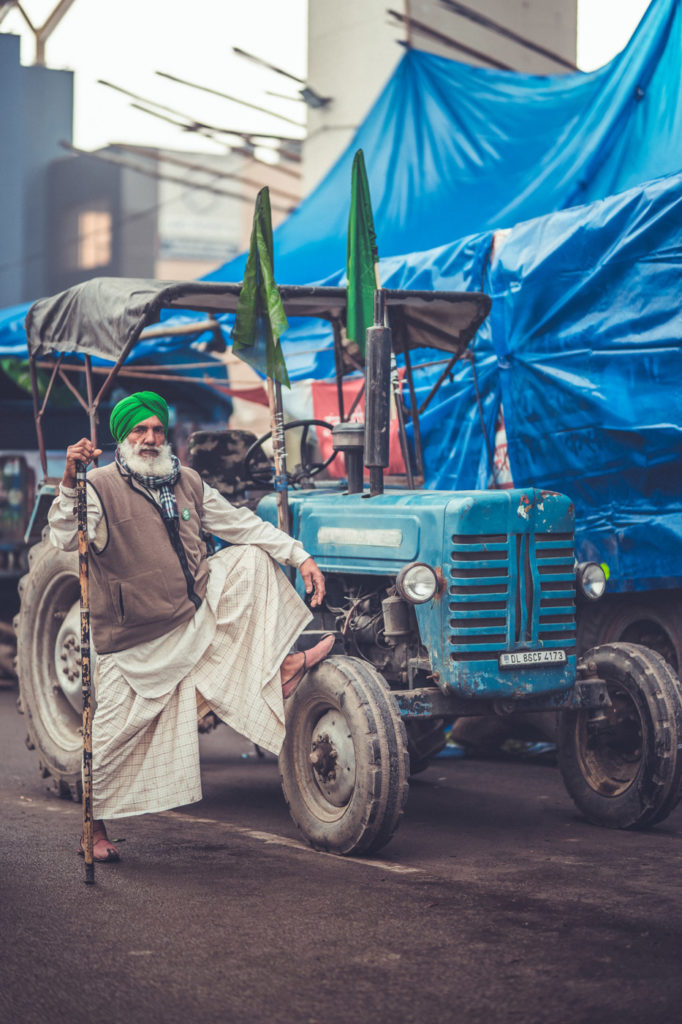
A protestor takes on a powerful stance by a tractor at the Tikri Border, wearing a chaadra—a traditional Punjabi garment tied around the waist—and holding a cane.
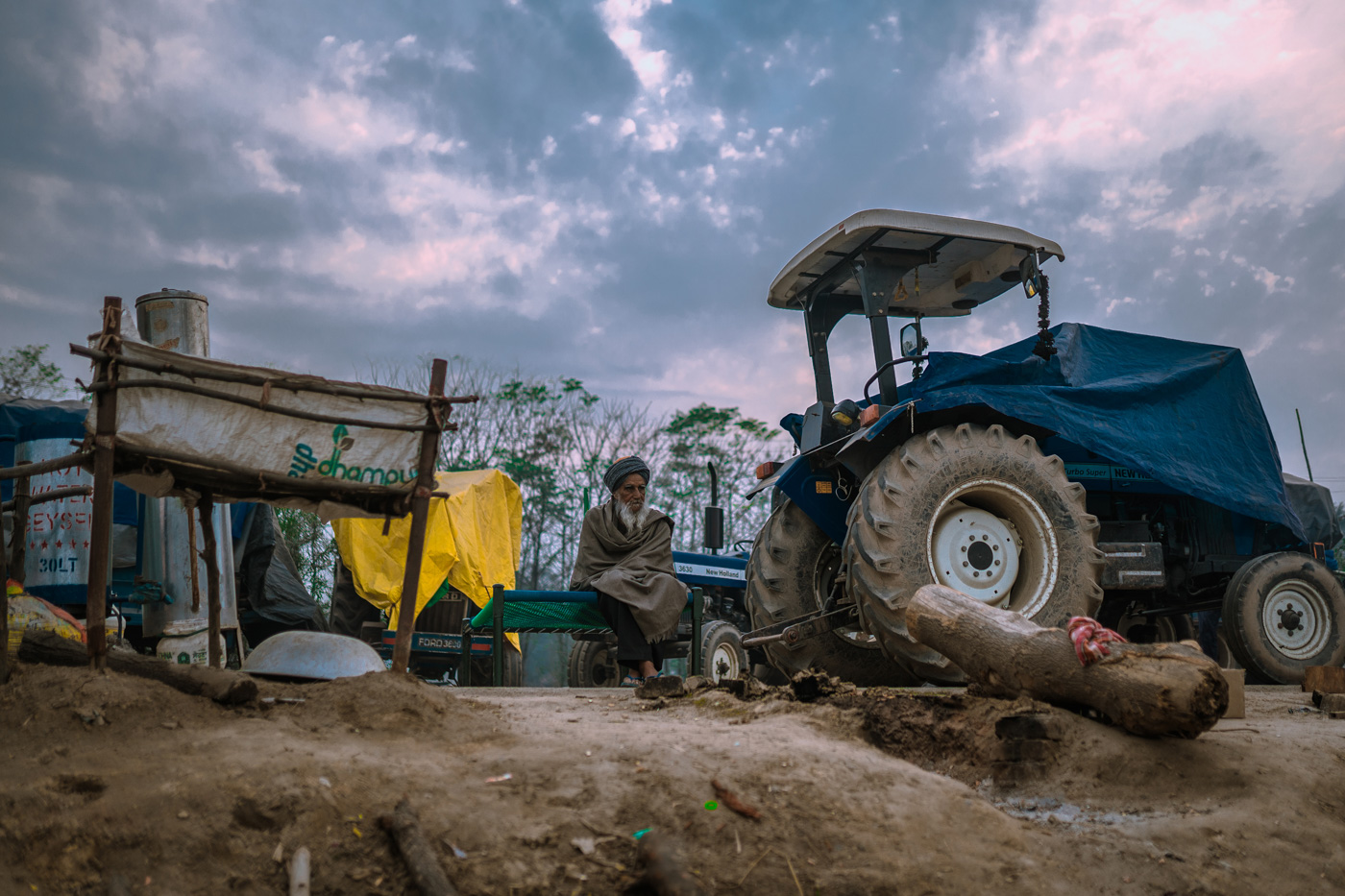
Towards the end of the line of protestors, removed from the most active spaces, an elderly man sits lost in deep thought, on a cot by his tractor. He has been camping out there since the movement began in November.
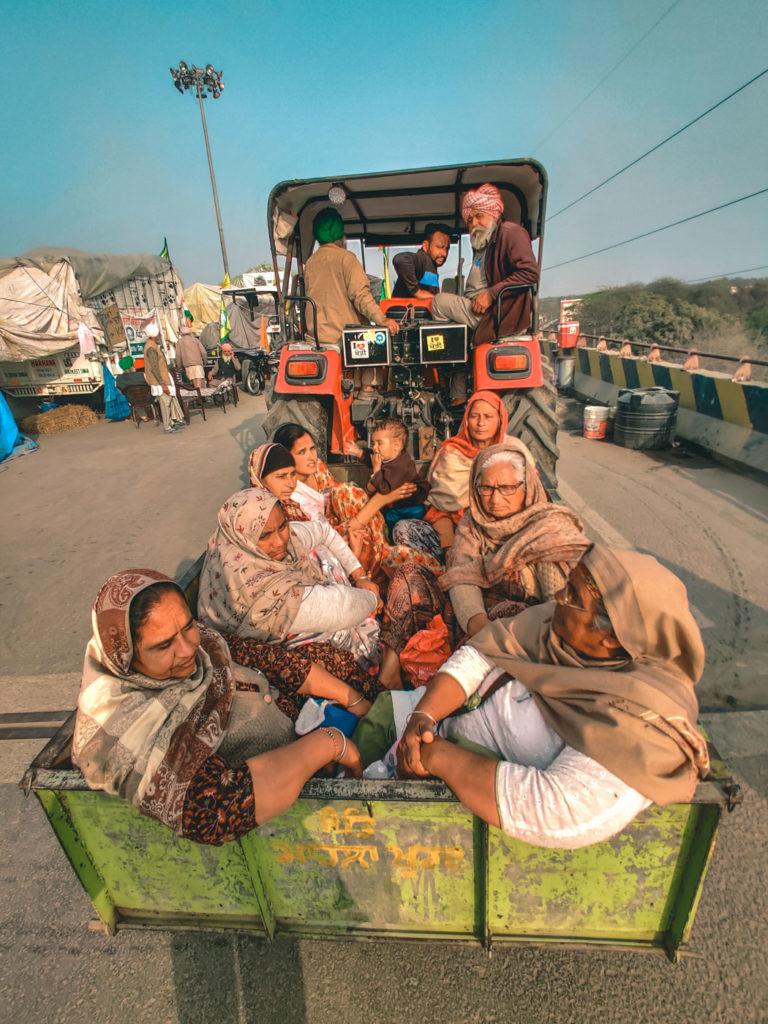
Members of one family piled into a vehicle as they move from one part of the highway to another. The men and elders are perched on the tractor while the women and children ride in an accompanying trailer.
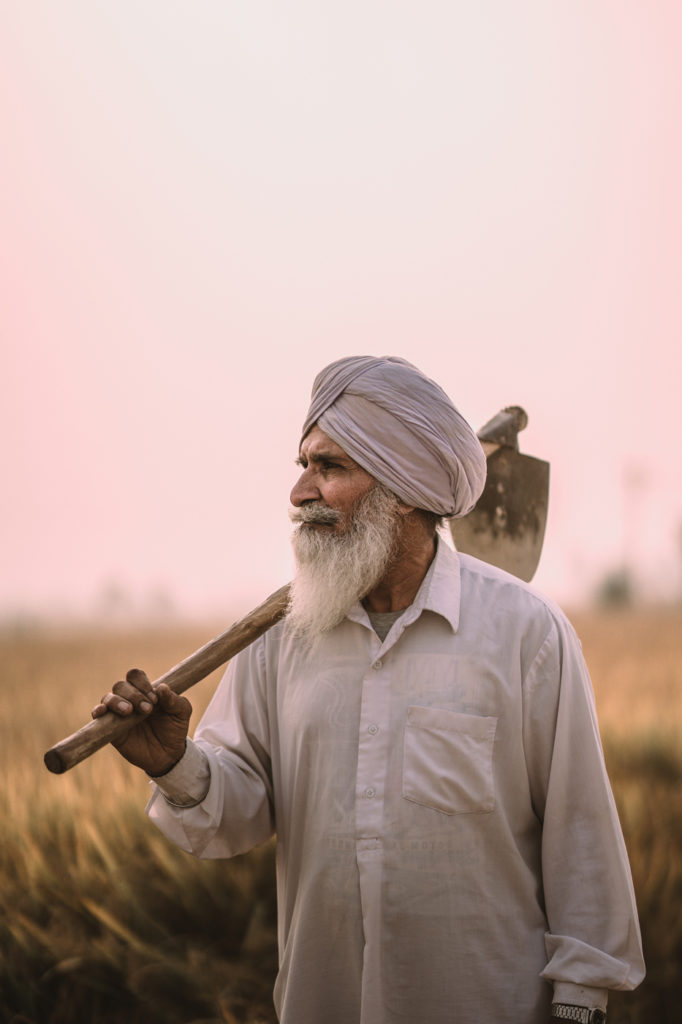
A farmer stands tall in his field, in the city of Jalandhar, Punjab. This photo was taken in September [2020], when sparks of protest were beginning to ignite. He wasn’t involved in the movement at the time, but he is now.
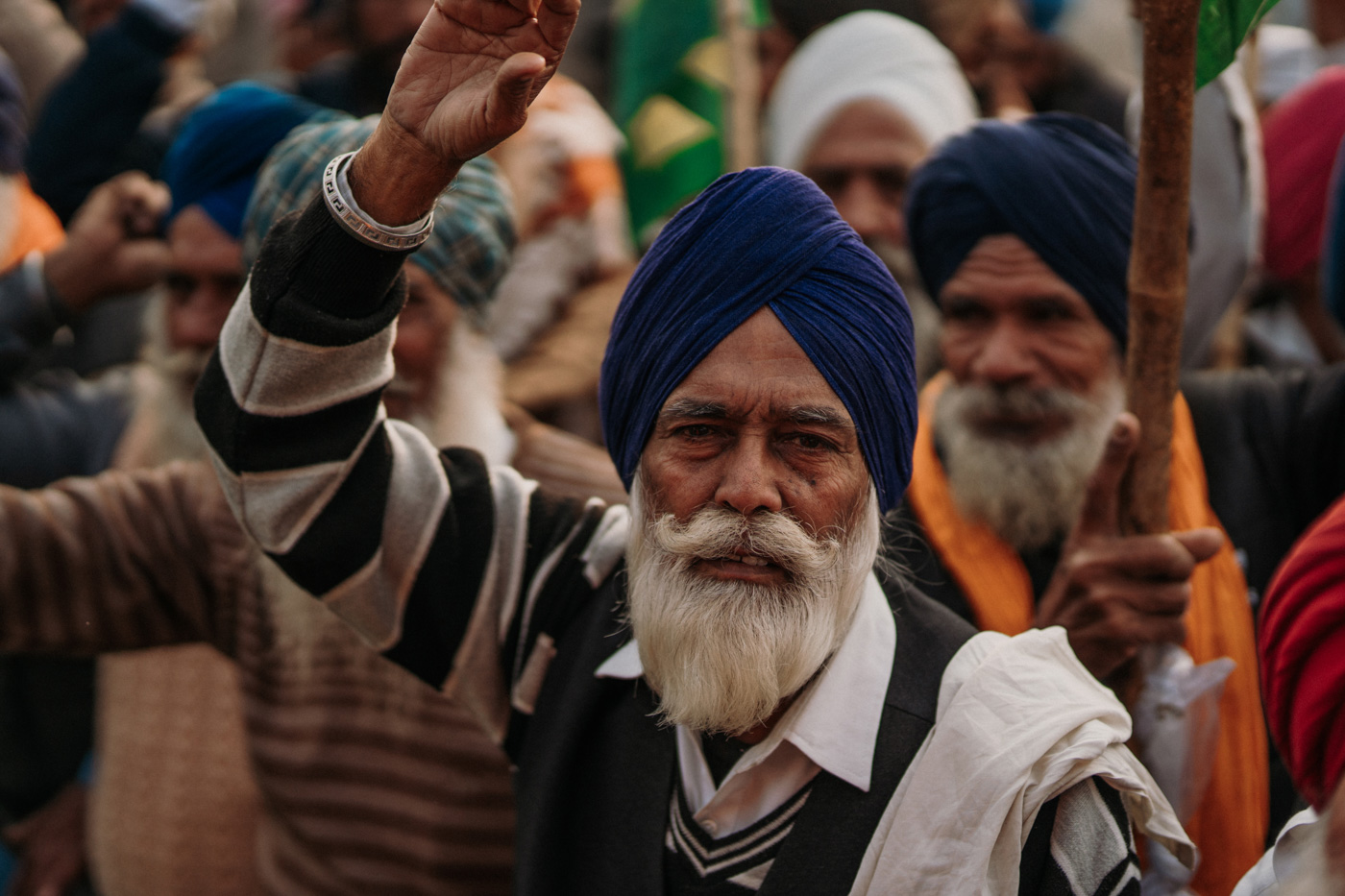
This photo was taken from one of the stages set up for speakers at the Tikri border. The men in the image were chanting slogans like “kisan mazdoor ekta zindabad,” which roughly translates to “the unity between farmers and laborers prevails.”
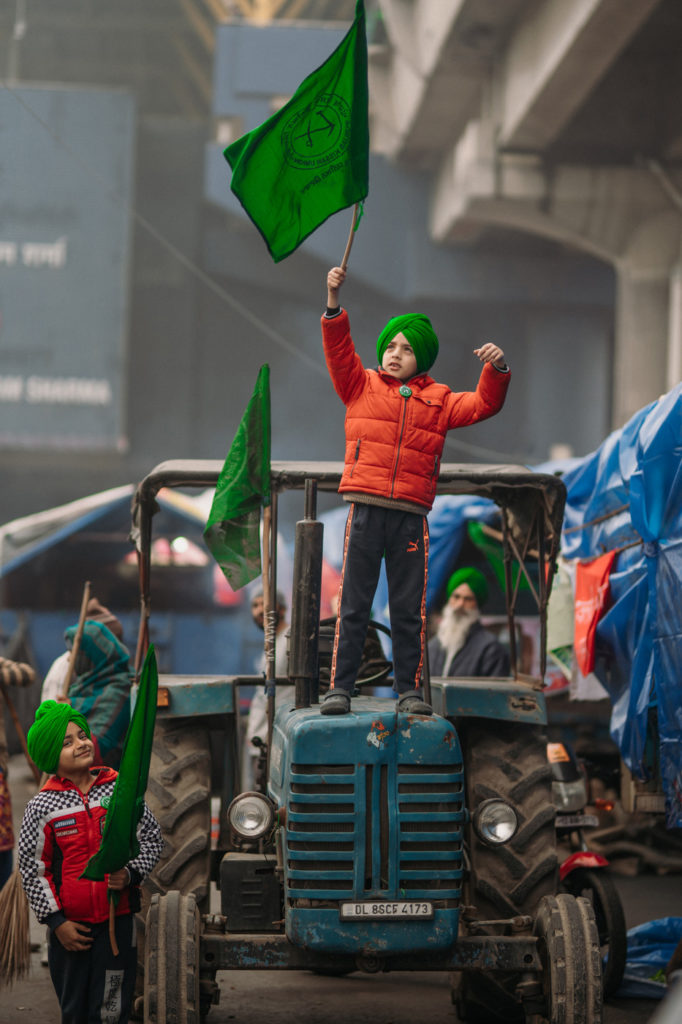
Two boys, age seven and five, stand on and by a tractor at the Tikri border holding flags with the Punjab Kisan [Farmers’] Union insignia emblazoned on them. They come from the same village and their families are heavily involved in the movement.






Our comments section is for members only.
Join today to gain exclusive access.